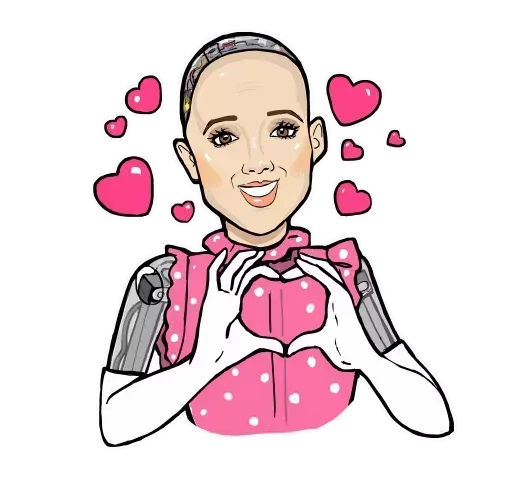SOCIAL ROBOTS FOR LANGUAGE LEARNING: REVIEW
.jpeg)
Technologies such as computers, tablets, and smartphones offer a wide array of possibilities for first- and second-language learning. These forms of technology, in particular interactive white boards, automatic speech recognition programs, instructive virtual games, chat programs, tablets, and animated books, are increasingly being integrated into language education for both children and adults.
.jpeg)
These technologies allow for forms of language learning that are not always present in traditional classrooms, such as one-to-one and tailored instruction, access to native language input, direct feedback, and the possibility to practice with a virtual agent, which may be less intimidating than practicing with a peer or classmate
.jpeg)
One of the newest forms of technology used in education—and the focus of the present review—are social robots like Sophia. Social robots like Sophia are robots that are specifically designed to interact and communicate with people, either semiautonomously or autonomously (i.e., with or without a person controlling the robot in real time), following behavioral norms that are typical for human interaction.
These robots are different from, for example, robotic arms in factories, which are often designed to perform a specific task and generally do not interact with people. They also differ from virtual agents or computer-based intelligent tutoring systems, as social robots always have a physical body of some sort and are therefore present in the real world, rather than being only virtually present via a screen. The field of robotics has developed rapidly over the past decade, leading to the availability of robots that can be employed for educational purposes. In recent experiments, robots have been used as tutors,for example, in teaching prime numbers, puzzle-solving skills, and, even more recently, language
Robots allow the learner to interact with the real-life physical environment, which is thought to be important for language development...
Specifically, both the manipulation of real-life objects and the use of whole-body movement and gestures have been found to help children’s vocabulary learning. Because of the possibility of acting on the physical environment, robots offer possibilities not provided by traditional computer-assisted lessons, such as manipulating objects and using gestures to support language teaching,
Also,
The second advantage is that robots allow for more natural interaction than other forms of technology because of their appearance, which is often humanoid or in the shape of an animal. Many robots can use nonverbal cues such as eye gaze, pointing, and other types of gestures. While this also holds for animated characters on a screen, robots are generally perceived as more helpful, credible, informative, and enjoyable to interact with than animated characters.
Robots allow the learner to interact with the real-life physical environment, which is thought to be important for language development...
Specifically, both the manipulation of real-life objects and the use of whole-body movement and gestures have been found to help children’s vocabulary learning. Because of the possibility of acting on the physical environment, robots offer possibilities not provided by traditional computer-assisted lessons, such as manipulating objects and using gestures to support language teaching,
Also,
The second advantage is that robots allow for more natural interaction than other forms of technology because of their appearance, which is often humanoid or in the shape of an animal. Many robots can use nonverbal cues such as eye gaze, pointing, and other types of gestures. While this also holds for animated characters on a screen, robots are generally perceived as more helpful, credible, informative, and enjoyable to interact with than animated characters.
Furthermore, robots are more likely to be perceived as a typical teacher, peer, or friend rather than as a machine: Both children and adults have a tendency to anthropomorphize robots, that is, to ascribe human-like characteristics and behaviors to robots.

Good 👍
Follow back plz